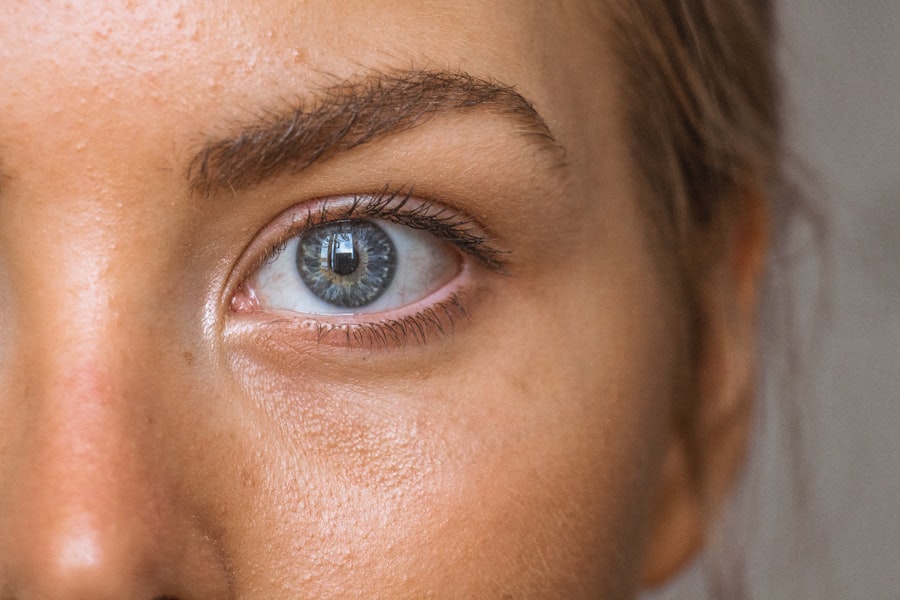Laser hair removal is a popular cosmetic procedure that utilizes concentrated beams of light to target and eliminate unwanted hair. The process begins with the laser emitting a specific wavelength of light that is absorbed by the pigment in the hair follicles. This absorption generates heat, which damages the follicle and inhibits future hair growth.
As you consider this treatment, it’s essential to understand that it works best on individuals with light skin and dark hair, as the contrast allows the laser to effectively target the hair without affecting the surrounding skin. Before undergoing the procedure, you will typically have a consultation with a qualified professional who will assess your skin type, hair color, and overall health. This assessment is crucial, as it helps determine the most effective laser settings for your unique needs.
During the treatment, protective eyewear will be provided to shield your eyes from the laser light. The duration of each session can vary depending on the size of the area being treated, ranging from a few minutes for small areas like the upper lip to over an hour for larger areas like the back or legs. Understanding this process can help you feel more prepared and informed as you embark on your journey toward smoother skin.
Key Takeaways
- Laser hair removal targets hair follicles to inhibit future hair growth
- Research and choose a reputable clinic or provider with experienced staff
- Shave the treatment area and avoid sun exposure before the procedure
- Topical anesthetics and cooling methods can help manage discomfort during treatment
- Follow aftercare instructions to minimize potential side effects and ensure proper recovery
Choosing the Right Clinic or Provider
Selecting the right clinic or provider for your laser hair removal is a critical step in ensuring a safe and effective experience. You should start by researching clinics in your area, looking for those that specialize in laser hair removal and have a solid reputation. Online reviews and testimonials can provide valuable insights into the experiences of previous clients.
Additionally, consider asking friends or family members for recommendations if they have undergone similar treatments. A personal referral can often lead you to a trusted provider. Once you have a shortlist of potential clinics, it’s essential to verify their credentials.
Ensure that the practitioners are licensed and certified in laser hair removal procedures. You may also want to inquire about the types of lasers they use, as different lasers are suited for different skin types and hair colors. A reputable clinic will be transparent about their technology and will take the time to explain how it works.
Scheduling consultations with multiple providers can also give you a sense of their approach and professionalism, allowing you to make an informed decision that aligns with your comfort level and expectations.
Preparing Your Skin for Laser Hair Removal

Preparation is key to achieving optimal results from your laser hair removal treatment. Before your appointment, you should avoid sun exposure for at least two weeks, as tanned skin can increase the risk of complications and reduce the effectiveness of the treatment. If you have recently tanned or have been exposed to UV rays, it’s advisable to reschedule your session until your skin has returned to its natural tone.
Additionally, refrain from using any products that may irritate your skin, such as exfoliants or retinoids, in the days leading up to your treatment. On the day of your appointment, it’s important to arrive with clean skin. This means avoiding lotions, creams, or deodorants in the area being treated, as these products can interfere with the laser’s effectiveness.
Your provider may also shave the area to ensure that the laser targets only the hair follicles without any interference from surface hair. By taking these preparatory steps seriously, you can enhance your chances of a successful treatment and minimize any potential discomfort during the procedure.
Managing Pain and Discomfort During Treatment
| Technique | Effectiveness | Satisfaction Level |
|---|---|---|
| Medication | High | Moderate |
| Physical Therapy | Moderate | High |
| Mindfulness and Relaxation | Low | Low |
While many people report that laser hair removal is relatively painless, some discomfort may occur during the procedure. The sensation is often described as similar to a rubber band snapping against the skin. To help manage any pain or discomfort you might experience, your provider may apply a topical anesthetic before starting the treatment.
This numbing cream can significantly reduce sensitivity in the area being treated, making the experience more comfortable for you. In addition to topical anesthetics, some clinics offer cooling devices that blow cold air onto your skin during treatment. This cooling effect can help alleviate discomfort and protect your skin from heat generated by the laser.
If you are particularly sensitive or anxious about pain, don’t hesitate to communicate this with your provider; they can adjust their technique or suggest additional methods to ensure your comfort throughout the session. Remember that everyone’s pain tolerance is different, so it’s essential to advocate for yourself and seek solutions that work best for you.
Aftercare and Recovery
After your laser hair removal session, proper aftercare is crucial for ensuring optimal results and minimizing any potential side effects. Immediately following treatment, you may notice some redness or swelling in the treated area; this is normal and typically subsides within a few hours. To soothe your skin, consider applying a cool compress or aloe vera gel to alleviate any discomfort.
It’s also advisable to avoid hot baths, saunas, or vigorous exercise for at least 24 hours post-treatment, as these activities can exacerbate irritation. In the days following your session, keep an eye on your skin for any signs of adverse reactions, such as excessive redness or blistering. If you experience any unusual symptoms, don’t hesitate to reach out to your provider for guidance.
By following these aftercare instructions diligently, you can help ensure a smooth recovery and achieve the best possible results from your laser hair removal treatment.
Potential Risks and Side Effects

While laser hair removal is generally considered safe, it’s important to be aware of potential risks and side effects associated with the procedure. Common side effects include temporary redness, swelling, and mild discomfort in the treated area. These symptoms usually resolve within a few hours to a few days.
However, in rare cases, more severe side effects can occur, such as blistering, scarring, or changes in skin pigmentation. Individuals with darker skin tones may be at a higher risk for pigmentation changes due to increased melanin absorption by the laser. To minimize these risks, it’s crucial to choose a qualified provider who has experience with laser hair removal and understands how to tailor treatments based on individual skin types and hair colors.
During your consultation, be sure to discuss any concerns you may have regarding potential side effects. A reputable practitioner will take the time to address your questions and provide you with realistic expectations about what you can anticipate from the procedure.
Long-Term Maintenance and Follow-Up Treatments
Achieving permanent hair reduction through laser hair removal typically requires multiple sessions spaced several weeks apart. The exact number of treatments needed varies depending on factors such as hair thickness, growth cycle, and the area being treated. After completing your initial series of sessions, many individuals find that they require maintenance treatments every six months to a year to keep unwanted hair at bay effectively.
It’s essential to maintain open communication with your provider regarding your progress after treatment. They can help assess how well your body is responding and recommend an appropriate follow-up schedule based on your individual needs. Additionally, some clients may notice that hair regrowth becomes finer and lighter over time, making maintenance sessions less frequent than initially anticipated.
By staying committed to follow-up treatments and adhering to your provider’s recommendations, you can enjoy long-lasting results from your laser hair removal journey.
Frequently Asked Questions about Laser Hair Removal
As you consider laser hair removal, you likely have several questions about the procedure and what to expect. One common inquiry is whether laser hair removal is suitable for all skin types and hair colors. While advancements in technology have made it possible for many individuals to benefit from this treatment, those with light-colored hair may not achieve optimal results due to lower pigment levels in their follicles.
Another frequently asked question revolves around how long each session takes and how many sessions are necessary for desired results. The duration of each appointment depends on the size of the area being treated; smaller areas may take just a few minutes while larger areas could require an hour or more. Most individuals need between three to seven sessions spaced several weeks apart for optimal results.
Remember that knowledge is power; understanding every aspect of this treatment will empower you to make informed choices that align with your beauty goals.
If you’re looking for more information on laser hair removal prep, you may want to check out this article on how to customize your laser hair removal treatment based on your interests. This article provides helpful tips on how to tailor your laser hair removal experience to suit your specific needs and preferences. It’s a great resource for anyone considering laser hair removal and wanting to make the most out of their treatment.
FAQs
What is laser hair removal?
Laser hair removal is a cosmetic procedure that uses a concentrated beam of light (laser) to remove unwanted hair. The laser targets the pigment in the hair follicles, damaging them and inhibiting future hair growth.
How should I prepare for laser hair removal?
Before your laser hair removal treatment, it is important to avoid sun exposure and tanning beds for at least six weeks. You should also avoid plucking, waxing, or electrolysis for six weeks prior to the treatment. Shaving is typically allowed and recommended before the procedure.
Is there anything I should avoid before laser hair removal?
Before laser hair removal, it is important to avoid using any products that may irritate the skin, such as retinoids or exfoliating scrubs. It is also recommended to avoid using any self-tanning products or spray tans before the treatment.
Can I shave before laser hair removal?
Yes, shaving the treatment area is typically recommended before laser hair removal. This is because the laser targets the hair follicle beneath the skin, and shaving ensures that the hair is still present but not visible on the surface.
Are there any specific skin care products I should avoid before laser hair removal?
Before laser hair removal, it is best to avoid using any products that may irritate the skin, such as retinoids, exfoliating scrubs, or harsh chemical peels. It is also recommended to avoid using any self-tanning products or spray tans before the treatment.






